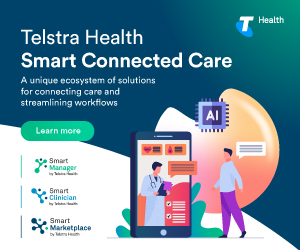Wearables, wellness and the new Apple Watch
With the rise of health and fitness apps, smartwatches and wearables, ‘digital wellness’ is continuing to play a bigger part in our everyday lives. And with the recent release of the Apple Watch Series 4, the question now is, how will this new digital age of wellness impact healthcare?
Welcome to the age of wearable wellness
The proliferation of digital wellness devices and apps has signalled a new era in more individuals closely tracking their fitness and health than ever before. In fact, a recent report from Flurry Analytics, found health and fitness app usage has become increasingly popular, growing over 330% in just 3 years.
Interestingly, the report also showed significant increase in engagement with these apps, with three quarters of active users opening their health and fitness app at least twice a week, and over a quarter of users accessing their fitness apps over 10 times a week.
“The age of wellness wearables is definitely here,” MedicalDirector’s Chief Clinical Advisor and General Practitioner, Dr Charlotte Middleton, said. “Whether it is the middle ear devices that monitor your heart rate, the wearables on your wrist that tell you how you’re sleeping, or the ECG monitors that go around your chest – there are so many exciting technology concepts that can really enhance the care we provide as doctors.”
MedicalDirector’s CTO, David Higgins, agreed. He wrote in his latest feature for PC World that, as more complex apps emerge, they are set to give patients even greater responsibility for their own well-being, and provide a higher level of patient comfort, without compromising the efficiency of an already over-burdened health system.
“Health data can be uploaded to patients’ smartphones and shared in real-time with their relevant care providers, for faster diagnosis and treatment,” he said.
Wearables and the age of patient data asymmetry
According to MedicalDirector’s CEO Matthew Bardsley, as a result of this increased wellness digital usage, individual users now have a wealth of data on their own wellbeing at their fingertips, making them far more empowered and equipped to track and monitor their own health and to some extent, even self-diagnose.
“Technology is now not only giving people incentive to become more deeply involved and interested in their own health, but they can easily share these data sets with their health practitioners in a far more accurate and structured way,” he said. “This means for the first time, the information asymmetry is changing where digitally agile patients will now have far more personal health tracking data on their own devices than their practitioner has on file. And it’s nothing to be afraid of. In fact, there are many mid-term and long-term benefits.”
In a recent article in the AFR. Bardsley highlighted how this means that Apple Watch and similar wearables now emerging are shifting the “asymmetry of information”.
“No longer are doctors the sole custodian of health data, as consumers are now empowered with wearables to bring health data to the conversation, and even make informed decisions themselves,” he said. “For example, the Watch Series 4 can determine whether the heart is beating in a normal pattern or whether there are signs of Atrial Fibrillation (AFib). Furthermore, the user can export their heart data to a simple PDF report that can be shared with their doctor for further analysis.”
However, despite all the fanfare, there is a “but”. In a recent article published in the Sydney Morning Herald, Bardsley highlighted two of the Apple Watch Series 4’s revolutionary features — the ECG and AFib detection — are only currently available in the US, where it has received classification by the Food and Drug Administration (FDA).
“The wellness features on the Apple Watch are necessary in Australia, especially as our population ages and becomes more at-risk for conditions such as Afib,” he said. “Through collaboration and innovation, we can all work together to determine the best way to bring the exciting health features found on the Watch Series 4 to meet the needs of healthcare professionals and patients for now, and in the future.”









